Teachers, most of us are already in the habit of writing content objectives for our lessons and units. But have you considered implementing language objectives, for lesson plan design that addresses the needs of your multilingual learners?
You’ve likely heard about the importance of equity. You are aware that we should strive to provide all students with equal access to the full range of educational experiences. Providing equitable instruction in the classroom means knowing learners and finding ways to ensure they have the access they are legally entitled to.
But what does this mean- in a practical sense- for teachers who have multilingual learners? Well, if you’ve spent any amount of time in the classroom with students learning English as an additional language, you know they face unique challenges. At times, they have difficulty accessing grade-level instruction given in English. They may struggle to comprehend lessons and content. They want to learn, but aren’t able to engage in learning activities. Perhaps they lack the vocabulary to communicate using academic English. This can lead to discouragement, frustration, and loss of motivation for students. If students are on the receiving end of instruction that hasn’t been crafted to be equitable, we cannot anticipate optimal learning outcomes.
However, there’s a simple and impactful step you can take toward greater equity. We can help students access grade-level content AND promote English learning at the same time! Let’s talk about adding in language objectives, for lesson plan preparation that will lead to more open doors for English learners!
Note:
This three-part blog series will supplement the training already available through WIDA. I encourage you to take part in the essential training offered by WIDA, and/or your state. The WIDA 2020 standards components referenced and some images shown in this series are shared from and credited to WIDA’s website.
This is blog two in a three-part series introducing the WIDA 2020 ELD Standards as a resource for K-6 educators. Find the first blog here.
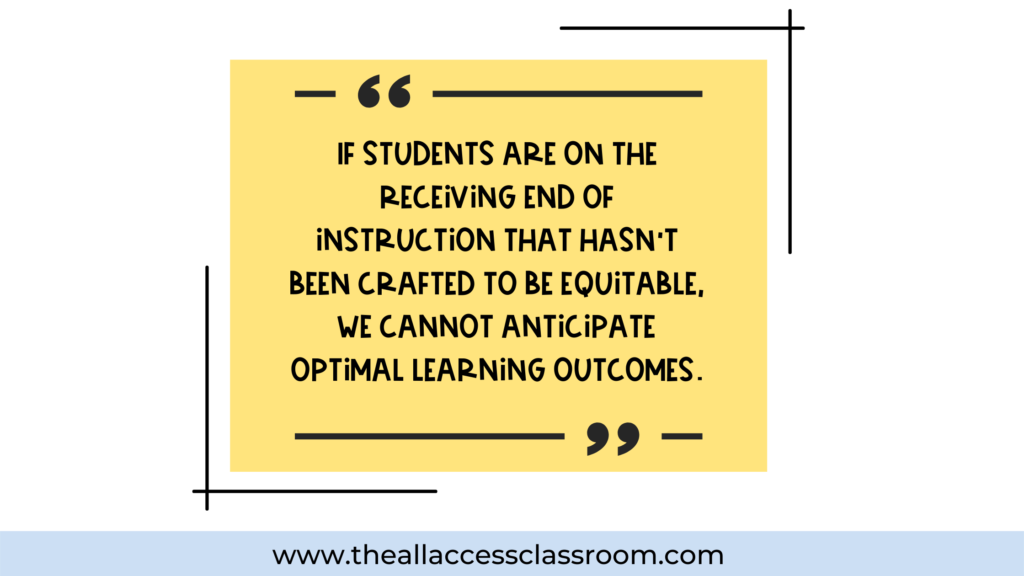
What are Language Objectives, and Where Do the WIDA Standards Fit In?
Language objectives are specific goals selected to support proficiency in academic English for content learning purposes. The more common trend or expectation in the past was that the ESL teacher/English Learner specialist would be “responsible” for all language growth for English learners. General education teachers were only responsible for teaching the standards and covering the content.
However, what research shows us is that the best context for academic English acquisition is created when it’s embedded in content-area instruction. When our multilingual learners have opportunities to explore language experiences in a supportive gen. ed. setting, two things happen. Students are motivated to participate actively in essential learning activities. They also get to build English skills throughout the instructional day, applying them to learning.
When teachers are mindful of how academic language is utilized purposefully as part of the learning process, they can intentionally set goals, explicitly teach, and coach all learners in essential skills.
By presenting even a single language objective for a lesson, teachers provide clarity and direction in how academic language will be meaningfully applied.
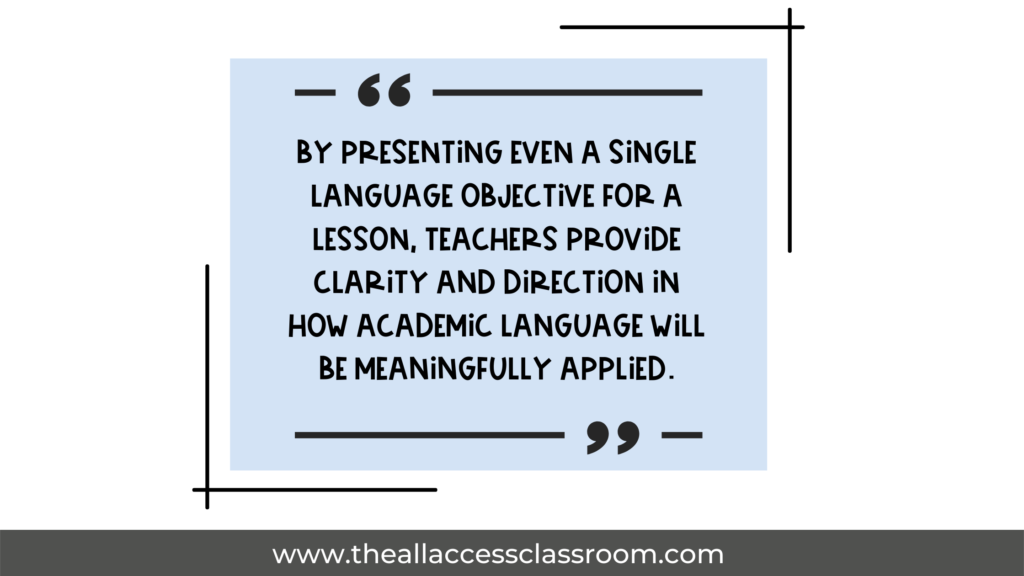
Examples of Language Objectives
Each state has adopted a set of English language development standards. To learn more, check with your ESL/EL specialist, district office, or state department.
This blog will outline how to use the WIDA ELD Standards Framework as a tool for writing language objectives.
Some examples straight from the WIDA standards are:
- [Kindergarteners in Language Arts will] interpret informational texts by asking and answering questions about descriptions of familiar attributes and characteristics.
- [Third graders in Math will] construct arguments that justify conclusion steps and strategies in simple patterns through causal connectors (because, so, that means) to present a case to others.
- [Fifth graders in Social Studies will] construct an explanation introducing events, through prepositional phrases of time and place, to contextualize.
What I love about the WIDA language standards is how strongly they connect content and language. Once you understand the components, organization, and navigation of the standards, creating language objectives is a simple process.
Aligning Content and Language Objectives: Using the WIDA Standards as a Guide
Finding content and language objectives that are a “good match” for your lesson or unit begins with understanding:
- your content standard/objective for the lesson/unit
- the key performance or assessment task
- reflection on the purpose for which students will be engaging in listening, speaking, reading, or writing in your lesson (this could be to: narrative, inform, explain, or argue– see blog #1 in the series for more on this)
Once you can say, “My students will be [listening, speaking, reading, or writing] for the purpose of [narrating events, informing by sharing facts, explaining how/why, or arguing to support an opinion],” you’re ready to open the standards! Note: The WIDA ELD Standards are free and printable here as a K-12 resource, or by grade level clusters.
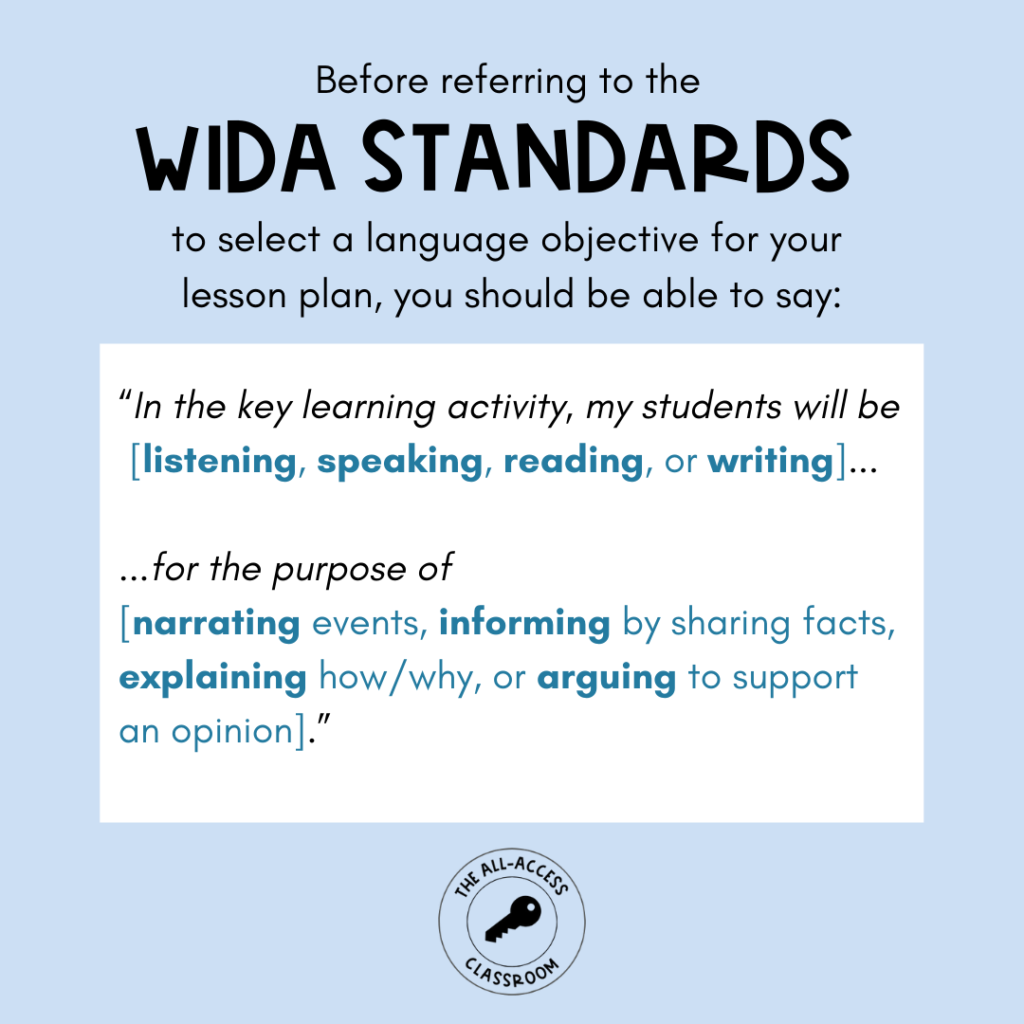
Step 1: Locate the page of the standards that aligns with your instruction.
The pages of the WIDA standards that you’ll use the most when planning instruction contain:
- grade level
- subject area
- key language use (explained in blog series Part 1)
- language expectations (including 2 main parts: functions and features)
Flip to the page you need, based on the first three elements above. These should align with the lesson, learning activities and primary language purpose.
Step 2: Select a language function that is most relevant to student communication within the key learning activities.
You’ll find the language functions in a colored text box at the top of each page. Think of the language functions as a menu listing possible ways students might use academic language in that particular context. For example, if you’re looking at the Kindergarten–Science–Explain page, the language functions listed show you the ways your students might need to use language to communicate how or why something happens in Science. Obviously, these functions could apply to many types of lessons and learning activities. So your job is to choose the language function that is the “best fit” for your purposes.
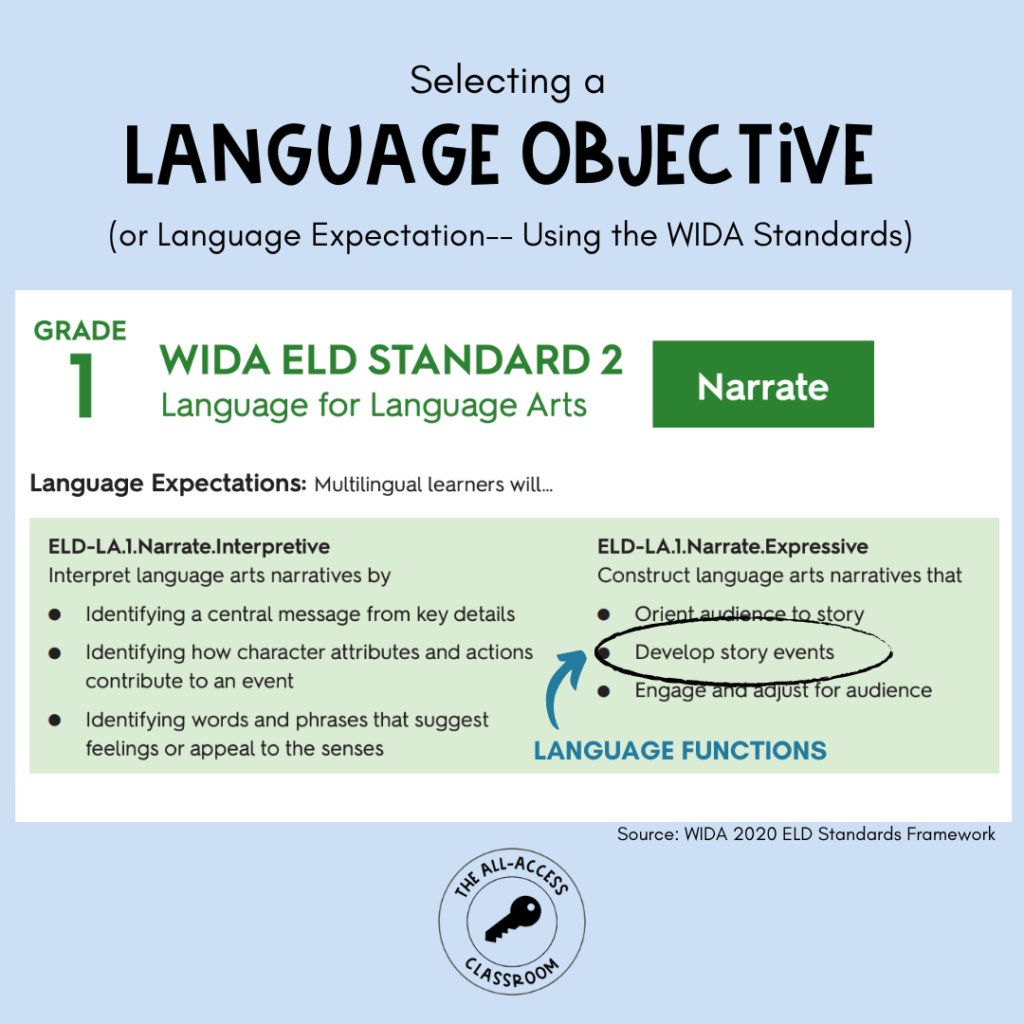
To choose a language function, I recommend that you ask yourself these guiding questions:
- What is the language modality that my students will be engaging in most in the key task(s) I have planned? Envision the learning activity taking place. For success in the task(s), what will students need the most? Communication through: listening, speaking, reading, or writing?
- Is this language mode interpretive (listening, reading) or expressive (speaking, writing)?
- Looking at the interpretive or expressive language functions (whichever applies best–they are listed in the colored box in two distinct columns)… Which language function comes closest to describing how my students will be using language in the key task(s)?
For example, let’s say my third graders in Social Studies will be reading a passage about how the invention of television changed life for Americans. I’d like for them to show they understand cause and effect by responding to questions about the text. I know the language mode used the most here will be reading (interpretive) to understand how/why (key language use of explain). Looking at the WIDA standards that apply, I might choose:
Multilingual learners will interpret social studies explanations by analyzing source [text] for causes/effects.
Step 3: Further define your language objective by including a language feature.
WIDA developed language features to provide educators will related, specific English language skills that may be beneficial to students when engaging in each language function. The standards writers have already done the grunt work for us! They have considered all the language forms, vocabulary, and grammar that will predictably put to use in each type of task.
Just below the language functions text box is a bulleted list containing the language features. You will see colored subheadings. These represent each of the expressive language functions. (Note: Headings for the interpretive language functions are not shown. This is because the language features are primarily observable and practiced through expressive language.)
Locate the heading that matches the language function you’ve selected already, and then check out the language features that pertain.
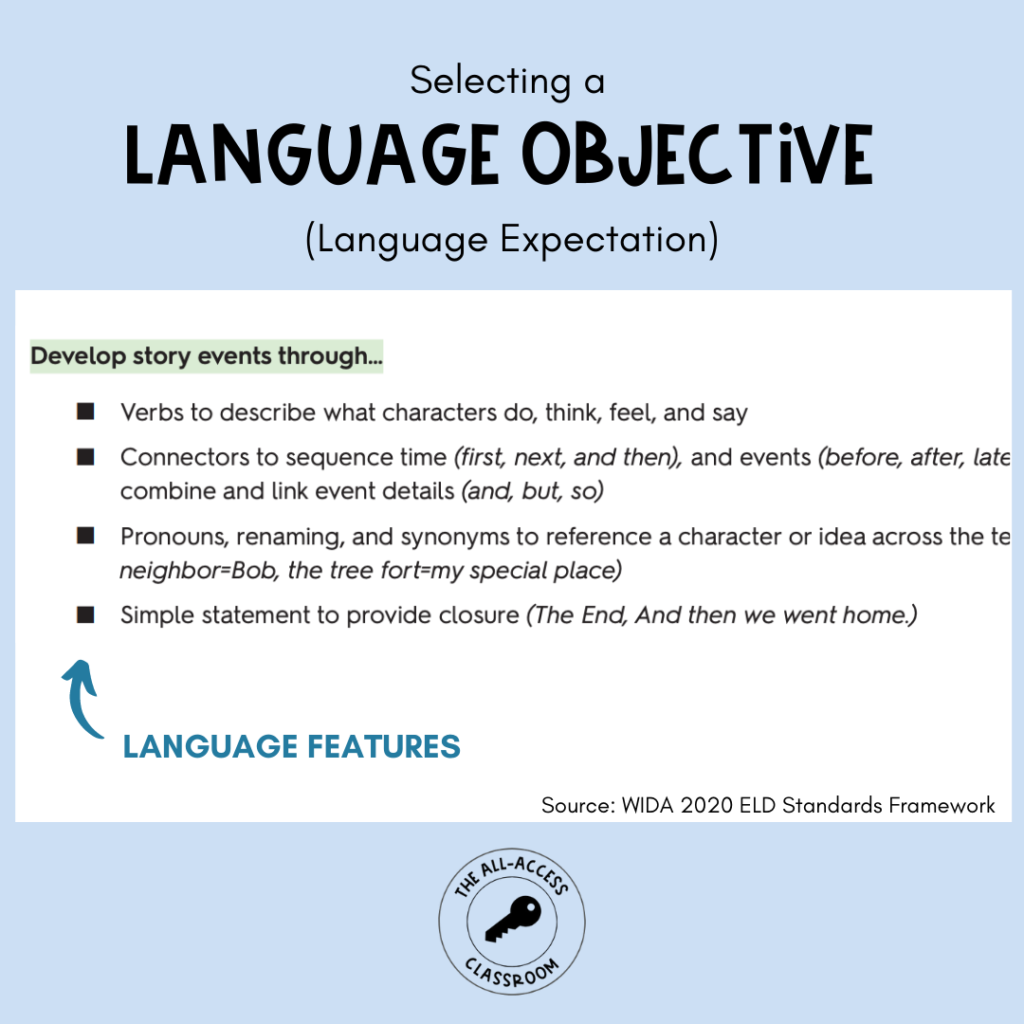
Multiple factors can be considered as you choose a language feature to focus on in your instruction:
- Your students’ current English proficiency levels
- The skills that have or have not yet been mastered by your students or taught to your class
- The input and recommendations of a colleague who also teachers/knows your student(s)
- The impact that having this language skill will have on success in the learning task
- Which language feature you would like to include explicit teaching/modeling of within the lesson
With these elements selected and steps complete, all you need to do is string together the parts of your language objective (language expectation, in WIDA terms). You may want to create a version in student-friendly language, as well, which you can share with students. Then proceed with curating opportunities for students to develop the language skills in context through:
- explicit teaching in mini-lessons or small group lessons
- teacher modeling
- supported/scaffolded practice activities
- collaborative learning activities
Lesson Planning Examples: Writing Aligned Content and Language Objectives
I’ll share a couple of examples of how you might write content and language objectives for lesson plans that are accessible for multilingual learners.
First Grade Math
I want my students to show they can solve a subtraction word problem with the amount of change unknown in the equation. They will use manipulatives to demonstrate the subtraction. Then I want them to show their reasoning with a sentence like: I know that _____are taken away because when I take ___ away, ___ are left. They will be sharing facts or observations, so the key language use is inform.
They will use speaking (expressive language) to do this. On the WIDA standards page, the best-fit language function seems to be: Multilingual learners will construct mathematical informational texts [or speech] that compare/contrast entities. (They will compare the number shown before and after the subtraction takes place.) Students will do this through this language feature: causal connectors (because, so) to link ideas and provide reasoning.
The entire language expectation/objective will then be:
Multilingual learners will construct mathematical informational texts [or speech] that compare/contrast entities, through causal connectors (because, so) to link ideas and provide reasoning.
Student-friendly language:
I can share how I know the amount taken away when subtracting. I will use this sentence to explain: I know that _____ is the number taken away, because I need to take ____ away in order to leave _______.
My instruction might include:
- Sentence frames taught/modeled/practiced/displayed
- Small group instruction
- Teacher modeling of this specific language use
- Important vocabulary or phrases explicitly taught
- Student practice in supportive peer partnerships or groups
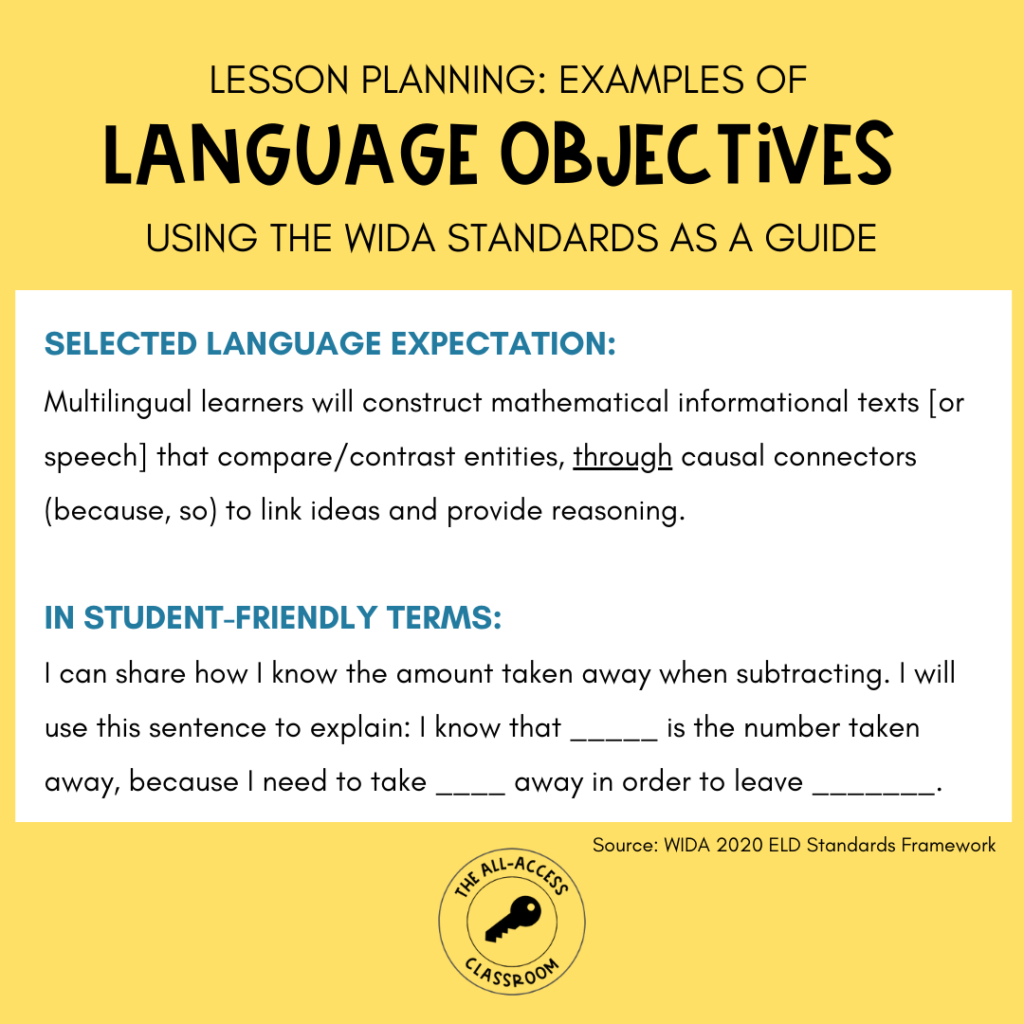
Fourth Grade Language Arts
I want my students to complete a graphic organizer as they prepare to describe a character from a fiction book, in detail. The graphic organizer will include the character’s thoughts, actions, words, challenges faced, etc. Students will be including evidence from the text. The key language use is narrate, since the text read/interpreted is fiction and based on a series of events.
For the language function, I will place the focus on the interpretive/reading skill. The main cognitive work will take place in analyzing and locating information within the narrative. (Although writing is involved in completing the graphic organizer, they will use it primarily as a means to make their interpretive understanding visible.)
So my language function might be:
Multilingual learners will interpret language arts narratives by analyzing how character attributes and actions develop across event sequences.
Because my selected language function is interpretive here, there are no associated language features provided in the WIDA Standards. I may, however, choose to include the scaffold of the graphic organizer in my student-friendly language objective:
I can analyze a character’s attributes and actions throughout a narrative, using a graphic organizer to share my ideas and evidence in the text.
Ready to Write Objectives for Lesson Plan Design that Supports All Learners!
There you have it, a complete run-down of how you can use the WIDA 2020 Standards to write content and language objectives for your instruction. I hope you found this helpful, and I encourage you to try this with an upcoming lesson! Keep in mind that once your objectives are on the board, the actions and decisions that follow are so important. Always remember to consider how your students may need to be supported in reaching established language goals. With your guidance, they will be using academic language like pros!
Need a Simplified or Alternate Approach to Writing Language Objectives?
If this all sounds like a bit much for right now, I’ve also created a content and language objectives template for teachers. My goal is to make the process as simple and easy as possible! You can get your own copy for free here.
For Additional Support:
WIDA Standards Implementation Resource Bundle (lots of helpful templates!)
- Check out the other blogs in this series! Part 1 and Part 3!
- Explore the online learning options available through WIDA
- Follow The All-Access Classroom on Instagram and Facebook for more tips and strategies for supporting multilingual learners!
- Join my email list to stay connected to content that is released
Check out these posts as well:
How to Write Objectives for Lesson Plans with Embedded Language Support – The All-Access Classroom
Language Objectives: The Key to Effective Content Area Instruction for English Learners -Colorin Colorado
Using Content and Language Objectives to Help All Students in Their Learning – Achieve the Core


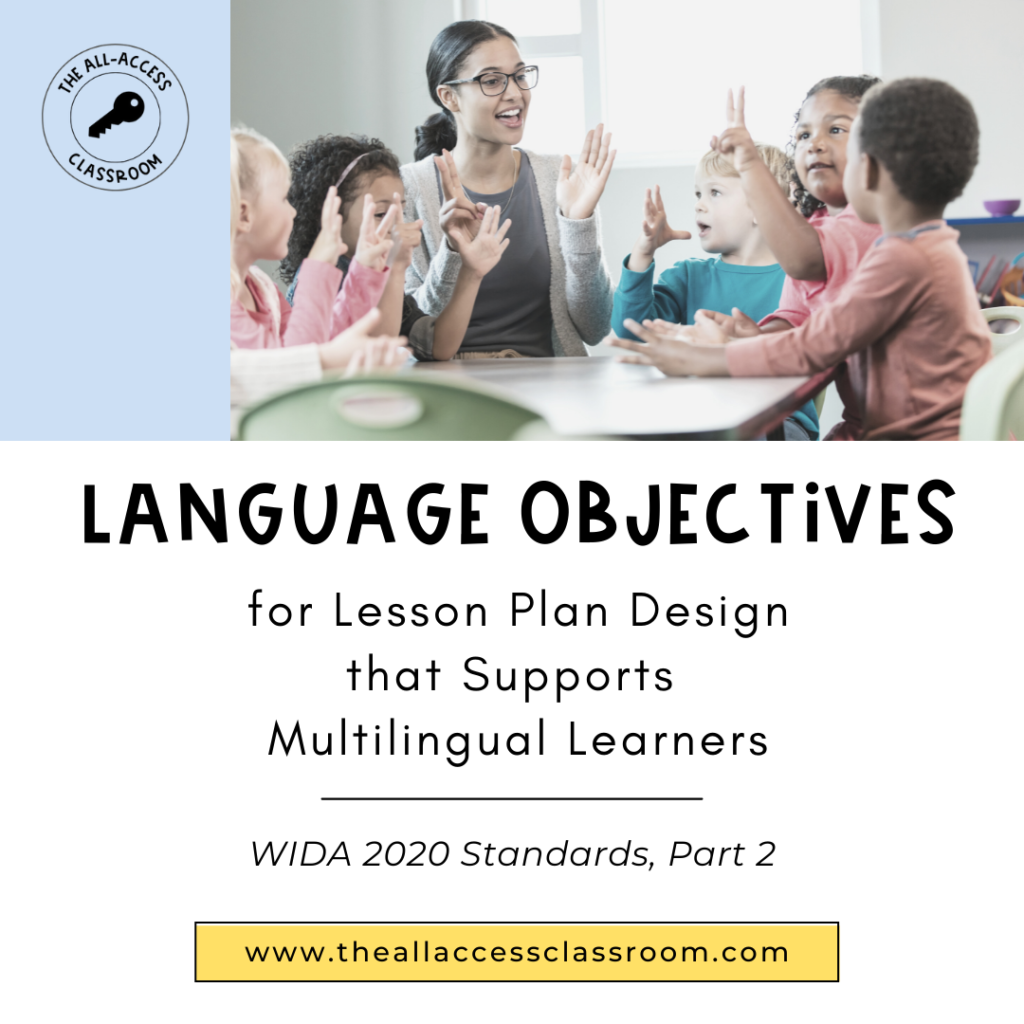
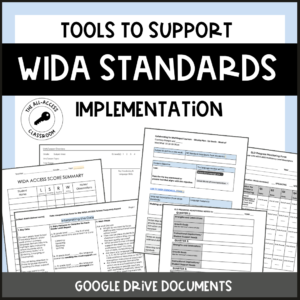

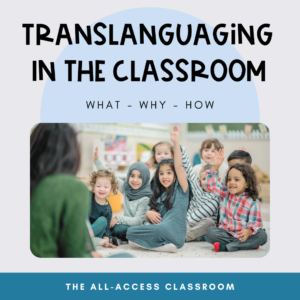


2 Responses